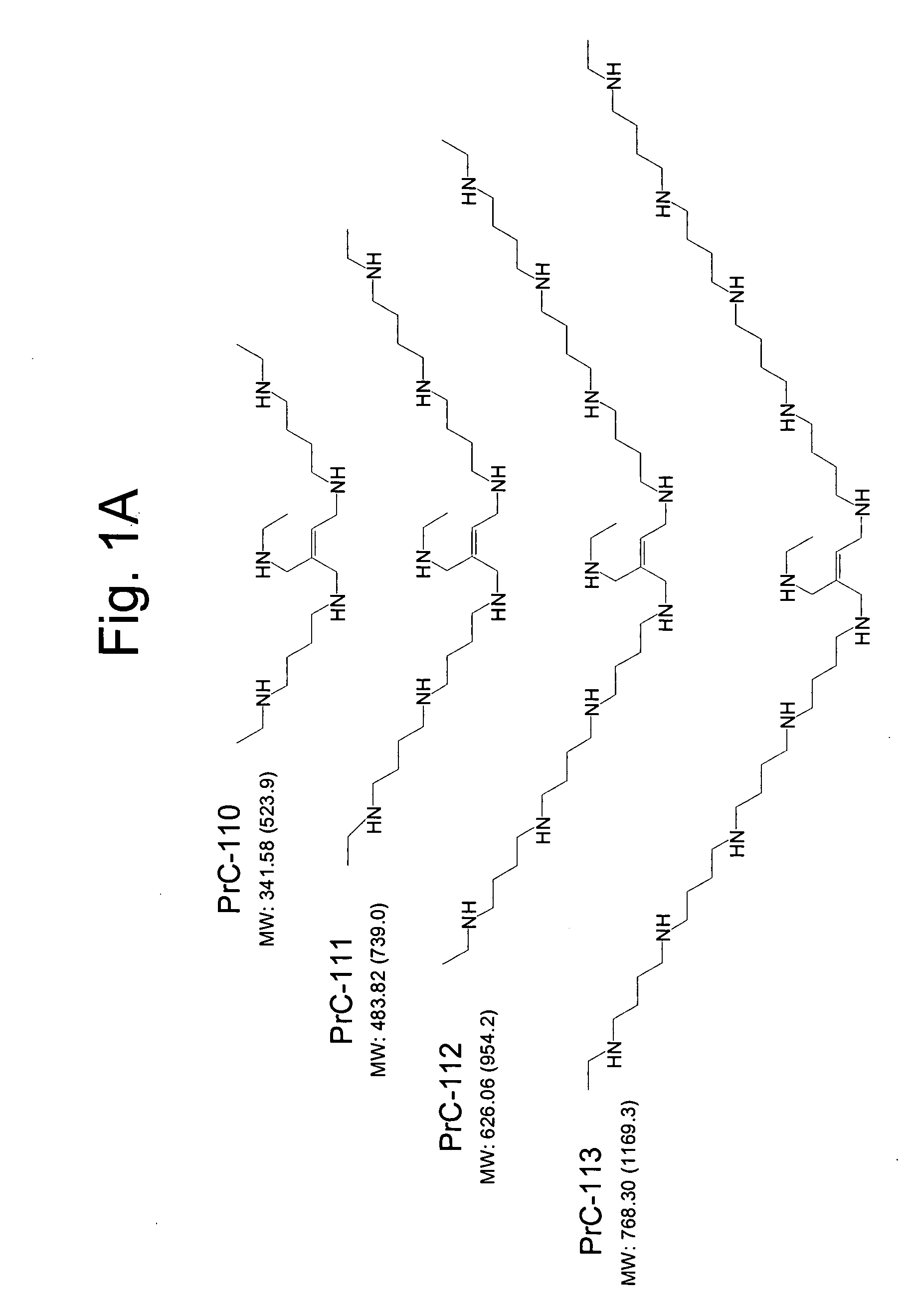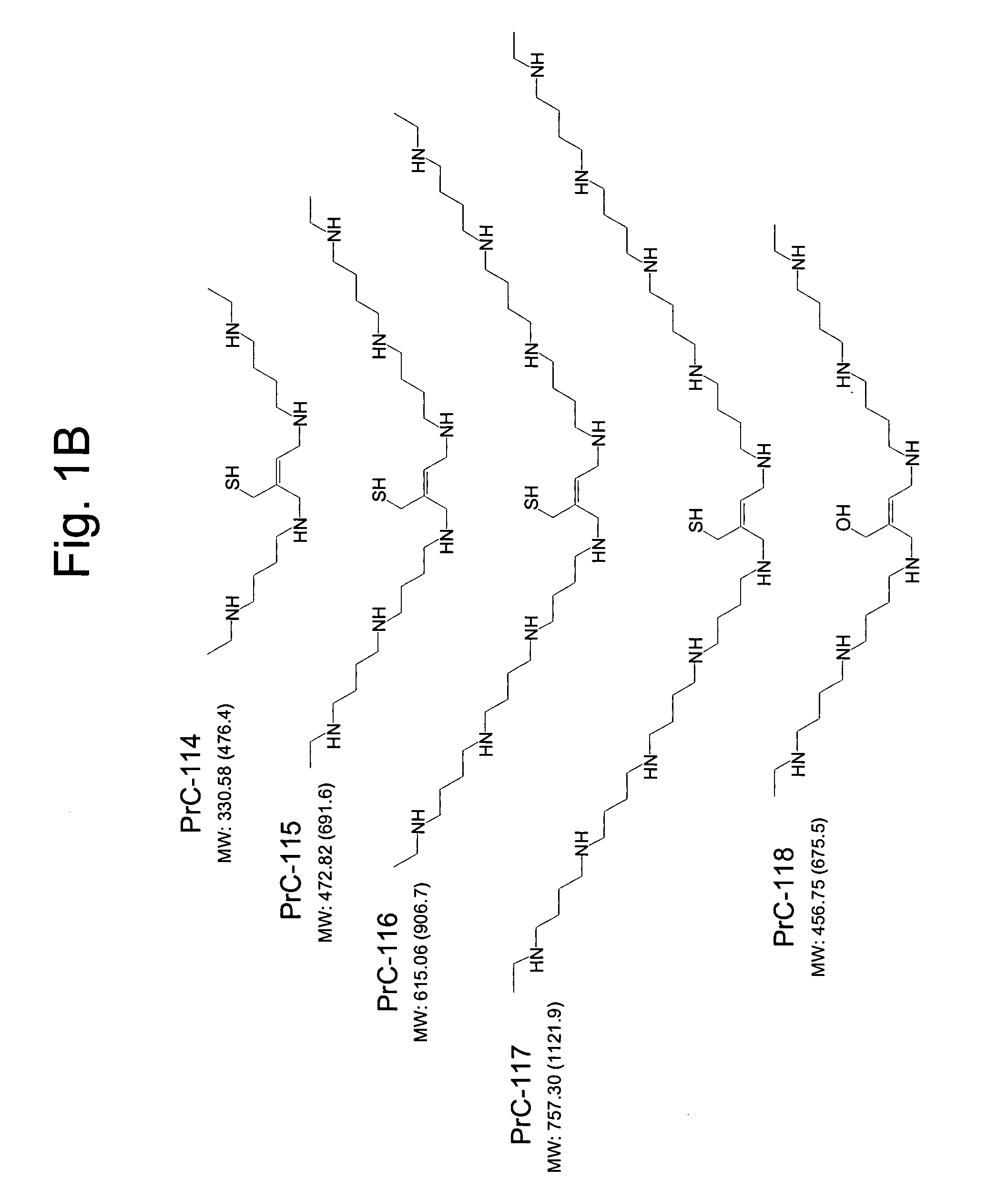Amino thiol compounds and compositions for use in conjunction with cancer therapy
a technology of amino thiol and composition, applied in the field of cancer therapy, can solve the problems of severe side effects of chemotherapy and radiotherapy used to treat cancer patients, clinical trials were aborted, and no treatment to prevent cancer therapy side effects, etc., and achieve the effect of reducing or preventing hair loss
- Summary
- Abstract
- Description
- Claims
- Application Information
AI Technical Summary
Benefits of technology
Problems solved by technology
Method used
Image
Examples
example 1
Preparation of Compounds Used in Synthetic Schemes
Scheme 1
[0223] Compound 2: 2 M ethylamine (compound 1) in tetrahydrofuran was stirred in a pressure bottle at <0° C. and mesitylene sulfonyl chloride (3 molar equivalents wrt ethylamine) was added in portions so that the temperature did not exceed 10° C. Dichloromethane and triethylamine were added and the pressure bottle sealed. The reaction was stirred in a 30° C. water bath for one hour and at RT for 30 minutes. The reaction progress was monitored by TLC using 8:2 heptanes: ethyl acetate as the mobile phase. Water was added and the organic layer was separated, the water layer was extracted once with dichloromethane, the combined organic layers were washed twice with water and condensed under vacuum. The product was used without further purification.
[0224] Compound 3: NaH (1.2 molar equivalents wrt compound A) was stirred, under N2, at 10° C. and dimethylformamide was added. Compound 2 dissolved in tetrahydrofuran was added and...
example 2
Biological Assay for Efficacy in Preventing Alopecia
[0257] The efficacy of chemoprotective polyamines and aminothiols in reducing or preventing chemotherapy- or radiation-induced alopecia in a rat model was examined. This animal model mimics many of the features found in chemotherapy-induced alopecia in humans. It is particularly useful for testing and optimizing novel therapeutics.
[0258] Induction of alopecia by cytoxan (CTX). Lactating Sprague Dawley mother rats with rat pups were purchased from Harlan Sprague Dawley (Indianapolis, Ind.). The mother rats were given food and water ad libitum. The rats pups were tested in the model of chemotherapy-induced alopecia described by Hussein A. M. et al., Science: 249, 1564 (1990). Cytoxan (CTX), a chemotherapeutic widely used in the treatment of cancer, was used to induce alopecia in the rats. A common side effect of cytoxan treatment in patients is alopecia. Lyophilized vials of Cytoxan were obtained from Mead-Johnson. To produce CTX-i...
example 3
Biological Assay for Efficacy in Preventing Dermatitis
[0261] To determine efficacy of chemoprotective polyamines in preventing radiation-induced dermatitis, adult rats were topically treated with the compounds before and after radiation treatment. Rats were exposed to medically relevant levels of radiation that could induce clinical radiation dermatitis. Sprague Dawley rats (Harlan Spraque Dawley) at 4-6 weeks-old were anesthetized with sodium pentobarbital at 40 mg / kg body weight (Sigma, St. Louis, Mo.) prior to radiation exposure. A defined area (1.5×2 cm) on the backs of rats was irradiated using a Mark I, Model 30, Cs 137 irradiator (J. L. Sheppard & Associates). Before topical drug treatment or irradiation, the backs of the rats were clipped using an Oster clipper at the closest setting. The rest of the body was protected from radiation exposure using a lead shield (2.5 cm thick). A dose response study was initially performed to reproduce relevant dermatitis that matched the G...
PUM
| Property | Measurement | Unit |
|---|---|---|
| temperature | aaaaa | aaaaa |
| temperature | aaaaa | aaaaa |
| temperature | aaaaa | aaaaa |
Abstract
Description
Claims
Application Information
 Login to View More
Login to View More - R&D
- Intellectual Property
- Life Sciences
- Materials
- Tech Scout
- Unparalleled Data Quality
- Higher Quality Content
- 60% Fewer Hallucinations
Browse by: Latest US Patents, China's latest patents, Technical Efficacy Thesaurus, Application Domain, Technology Topic, Popular Technical Reports.
© 2025 PatSnap. All rights reserved.Legal|Privacy policy|Modern Slavery Act Transparency Statement|Sitemap|About US| Contact US: help@patsnap.com



